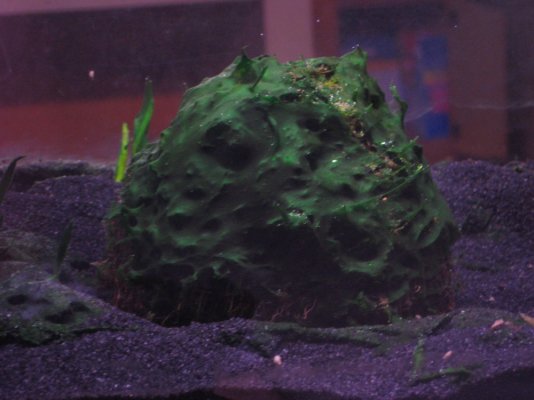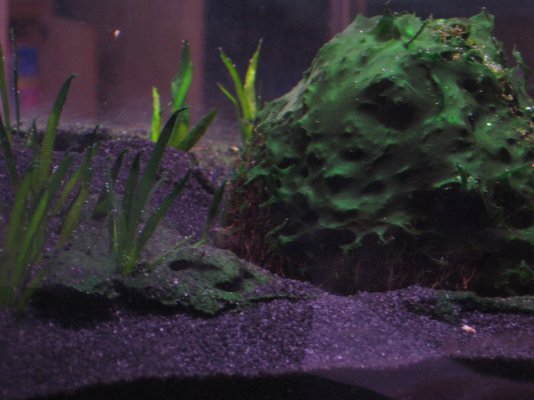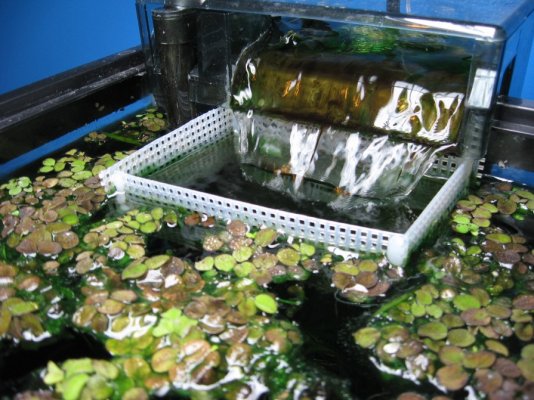fishfanatic
Aquarium Advice Addict
- Joined
- Apr 6, 2011
- Messages
- 2,038
For the whole life of my 20 gallon tank (about 3 months) I have had constant algae/diatom problems. I am almost certain it is diotomes. It is a dark green color and it grows like a blanket over everything. When I scrape it off the glass it kind of peels up. It has managed to cover all the plants in the tank, even the floating plants roots. As you can imagine the plants are suffering greatly.
Here are the specs of my tank:
Is it possible that the sand is leaking silicate into the water (I read that silicate can cause diotomes)?
Is there some kind of silicate remover that I could put in the filter for a few weeks?
Thanks for all your help and time!
Here are some pictures of the green monster growing on some java moss (well what was java moss):
Here are the specs of my tank:
- T5HO duel hagen glo light fixture (one 18000K bulb and the other 5000K) I need new bulbs I know...

- 20 gallon long tank
- 100 watt aqueon heater (don't know why I included this)

- AquaClear 50 (with sponge, poly fill, and biomax)
- Petco black sand (petco brand)
- Ammonia 0, nitrIte 0, and nitrAte 20
- Tank live stock: 2 adult kribinsis (pair) and 5-10 baby kribs (about a 1/8 inch long)
- I do a 50% pwc every 2 weeks (using prime as a water conditioner)
- I used to add flourish comprehensive once a week but stopped about a month ago.
Is it possible that the sand is leaking silicate into the water (I read that silicate can cause diotomes)?
Is there some kind of silicate remover that I could put in the filter for a few weeks?
Thanks for all your help and time!

Here are some pictures of the green monster growing on some java moss (well what was java moss):
Attachments
Last edited:



